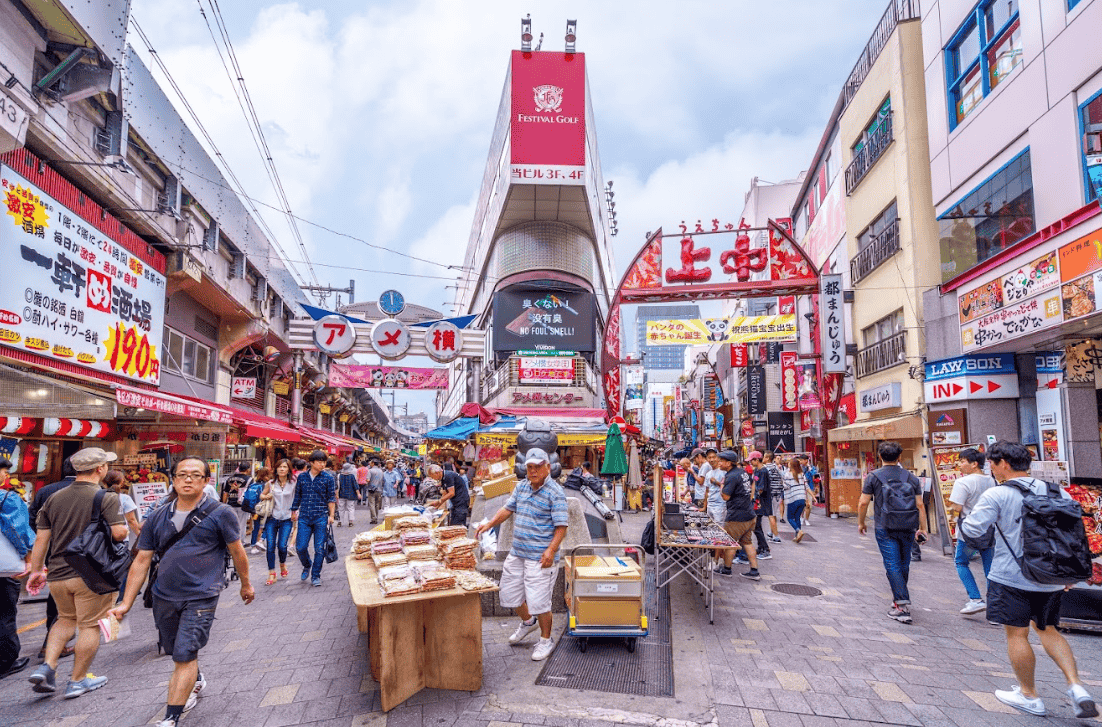The Importance of Reliable Connectivity on Japan Food Tours

Japan’s culinary landscape offers everything from steaming bowls of ramen in Tokyo’s narrow alleys to fresh sashimi at Osaka’s bustling markets. Yet even the most carefully planned food tour can quickly turn frustrating without proper internet access. When you’re hunting down that recommended yakitori stand or trying to translate a handwritten menu in a rural izakaya, reliable connectivity isn’t just convenient—it’s essential for making the most of your gastronomic adventure.
Modern food tourism demands constant access to maps, translation apps, restaurant booking platforms, and social media. Unlike traditional sightseeing where you might plan your day in advance, food tours require flexibility to discover hidden gems, check real-time reviews, and navigate between neighborhoods. An esim for japan eliminates the hassle of airport SIM card queues and provides instant connectivity the moment you land, letting you focus on what truly matters—experiencing Japan’s incredible food culture.
Navigating Crowded Streets to Hidden Eateries
Japan’s best culinary experiences often hide in unmarked buildings, basement locations, or residential neighborhoods far from tourist centers. That legendary tempura restaurant everyone talks about might occupy the third floor of an aging building with no English signage. Without reliable internet access, finding these treasures becomes nearly impossible.
Using Digital Maps for Precision Navigation
Google Maps proves invaluable when searching for specific addresses in Japan’s complex street numbering system. Many neighborhoods don’t follow Western grid patterns, and building numbers may not run sequentially. Real-time GPS guidance helps you confidently navigate Kyoto’s maze-like Gion district or track down that tiny sushi counter in Fukuoka’s Tenjin area. You’ll need steady connectivity to access these mapping features, especially when venturing beyond major tourist zones where physical landmarks become less recognizable.
Following Food Blogger Recommendations
Instagram food accounts and travel blogs frequently update their recommendations with seasonal specialties and newly opened establishments. Being able to check these sources while exploring lets you adapt your plans based on current conditions. Perhaps that tonkatsu place you wanted to visit closed for renovations, but a new motsunabe spot just opened nearby. Having instant access to this information transforms rigid itineraries into flexible adventures that capture Japan’s dynamic food scene.
Coordinating Group Meetups
Food tours become more enjoyable when shared with travel companions, but groups inevitably split up in crowded markets or shopping districts. Messaging apps like LINE, WhatsApp, or WeChat require internet connectivity to coordinate meetup spots at Tsukiji Outer Market or ensure everyone finds the correct entrance to a multi-floor department store food hall. Without reliable data, simple logistics can consume precious eating time.
Real-Time Translations for Menus and Reviews
Japanese cuisine’s incredible diversity means encountering unfamiliar dishes daily. Regional specialties like Hiroshima’s okonomiyaki differ significantly from Osaka’s version, while seasonal kaiseki menus feature ingredients that may not have direct English translations. Understanding what you’re ordering enhances both safety and satisfaction.
Decoding Complex Menu Items
Translation apps have become remarkably sophisticated, with camera-based instant translation capabilities that overlay English text onto Japanese menus. This technology proves especially valuable at traditional establishments where picture menus don’t exist and staff may not speak English. You can identify specific ingredients, cooking methods, and portion sizes before ordering, avoiding unwanted surprises or accidentally ordering something that conflicts with dietary restrictions.
Reading Customer Reviews
Japanese review platforms like Tabelog and Retty contain detailed feedback from local diners who offer insights you won’t find in English-language guidebooks. These reviews highlight specific menu items worth trying, warn about long wait times during certain hours, and provide cultural context about dining etiquette at particular establishments. Accessing these platforms requires internet connectivity but dramatically improves your chances of memorable meals rather than tourist traps.
Communicating Dietary Requirements
Food allergies and dietary preferences become easier to communicate when you can pull up pre-translated phrases or show restaurant staff clearly written information about your needs. Many restaurants appreciate when visitors make this effort, and having access to translation tools helps ensure your restrictions are properly understood and respected.
Sharing Culinary Discoveries Instantly
Food photography has become integral to travel experiences, with many people documenting their meals for friends, family, or social media followers. Beyond vanity, this documentation serves practical purposes—creating personal reference guides for future trips or helping others discover exceptional dining spots.
Uploading High-Quality Images
Japan’s photogenic food presentation makes every dish Instagram-worthy, from perfectly arranged sushi pieces to the theatrical tableside preparation of shabu-shabu. However, uploading high-resolution photos and videos consumes significant data. Without adequate connectivity or affordable data plans, you might find yourself waiting until returning to hotel Wi-Fi, by which time the spontaneous enthusiasm has faded. Consistent internet access lets you share experiences in real-time while emotions run high.
Engaging with Your Audience
When followers comment with questions about specific dishes, restaurants, or neighborhoods, responding promptly while details remain fresh improves the quality of your interactions. Perhaps someone asks about the exact location of that incredible matcha soft-serve stand or wants to know whether a particular ramen shop accepts credit cards. Answering these queries while you’re still in the area provides more accurate, helpful information than trying to remember details days later.
Building Personal Food Journals
Many travelers use note-taking apps, food diary platforms, or personal blogs to record impressions, flavors, and recommendations. Writing these entries while sensory memories remain vivid produces more evocative, useful content than retrospective accounts written weeks after returning home. Cloud-based apps require connectivity to sync across devices, ensuring your carefully documented experiences don’t get lost if your phone encounters problems.
Common Connectivity Challenges in Japan
Despite being a technologically advanced nation, Japan presents unique connectivity challenges for international travelers. Understanding these obstacles helps you prepare appropriate solutions rather than discovering limitations at inconvenient moments.
High Roaming Fees from International Providers
Traditional mobile roaming in Japan often costs $10-15 per day through major carriers, quickly accumulating to hundreds of dollars for typical two-week trips. These roaming packages frequently impose daily data caps that seem generous until you spend a full day using navigation, translation apps, and uploading photos. Exceeding these limits triggers additional charges or reduced speeds that make basic tasks frustratingly slow. Many travelers discover these costs only after returning home to shocking bills.
Limited Public Wi-Fi in Rural Areas
While major cities offer free Wi-Fi at train stations, convenience stores, and tourist attractions, coverage becomes spotty once you venture into rural regions. Hokkaido’s farming communities, Shikoku’s mountain villages, and Kyushu’s coastal towns may lack reliable public Wi-Fi despite offering exceptional regional cuisine. Depending solely on free Wi-Fi means missing opportunities to discover authentic local experiences or struggling to find your way back to your accommodation after dinner.
Network Overload During Peak Tourist Seasons
Cherry blossom season in spring and autumn foliage periods bring massive tourist influxes to popular destinations. This congestion can overwhelm public Wi-Fi networks and even cellular infrastructure in areas like Kyoto’s Arashiyama district or the Mount Fuji viewing areas. Having your own dedicated data connection ensures consistent access even when shared networks become unusable. Similar connectivity issues occur during major festivals, holiday periods, and weekends when domestic tourists flood popular dining districts.
How eSIM Services Address Traveler Pain Points
Electronic SIM technology represents a significant advancement for international travelers, eliminating many traditional connectivity frustrations. Understanding how eSIM services work helps you appreciate their advantages over conventional options.
Easy Activation Without Physical SIM Swaps
Traditional travel SIM cards require locating retailers after landing, completing purchase transactions in an unfamiliar environment, and physically swapping tiny SIM cards without losing your original. This process consumes valuable time and creates stress, especially when arriving on evening flights or during busy travel periods. eSIM technology downloads carrier credentials directly to compatible devices through a simple QR code scan. You can complete activation before leaving home, ensuring connectivity the moment your plane lands in Tokyo or Osaka. This convenience proves particularly valuable when arriving tired after long international flights and wanting to immediately contact accommodation providers or transportation services.
Flexible Data Options for Varied Trip Lengths
eSIM providers typically offer multiple plan durations and data allowances matching different travel styles. Weekend food tours to Tokyo require different solutions than month-long culinary journeys across multiple regions. Perhaps you’re planning a quick business trip with minimal data needs or an extended vacation involving daily video uploads. Having options means paying only for what you actually use rather than accepting one-size-fits-all packages that either provide insufficient data or waste money on unused capacity. Some eSIM services even allow adding additional data mid-trip if your usage exceeds expectations, providing flexibility that traditional SIM cards rarely offer.
Consistent Coverage Across Urban and Remote Spots
Quality eSIM providers partner with Japan’s major cellular networks, offering the same coverage that domestic users enjoy. This access extends beyond Tokyo’s Shibuya district to include rural areas like Takayama’s historic streets, Kanazawa’s traditional tea houses, and the Noto Peninsula’s fishing villages. Whether you’re searching for that perfect tonkotsu ramen in Hakata or exploring Okinawa’s unique Ryukyuan cuisine, consistent connectivity keeps you connected. This comprehensive coverage eliminates the anxiety of venturing beyond major cities and wondering whether your connection will suddenly disappear.
Enhancing Food Tours with eSIM Connectivity
Reliable internet access transforms how you experience Japan’s culinary offerings, enabling spontaneous discoveries and deeper engagement with food culture. These benefits extend beyond simple convenience to fundamentally improve your travel experience.
Locating Authentic Street Food Vendors
Japan’s street food scene operates differently than Southeast Asian night markets. Food stalls appear at specific times, locations, and seasons, with festivals and local events hosting temporary vendors selling regional specialties. Finding these opportunities requires monitoring social media, checking event calendars, and following local food accounts that announce pop-up appearances. With constant connectivity, you can discover that a ramen festival is happening in Yokohama this weekend or learn about a seasonal matsuri featuring grilled ayu fish in Gifu. These spontaneous adventures often provide more memorable experiences than pre-planned restaurant reservations.
Booking Last-Minute Reservations Online
Many popular Japanese restaurants require advance reservations but occasionally have cancellations or same-day availability. Being able to check reservation platforms like Tabelog, Ikyu, or Omakase regularly throughout the day lets you capture these opportunities. Perhaps that three-Michelin-star sushi restaurant you thought was fully booked suddenly shows availability for tonight, or a famous yakiniku place just opened a counter seat for lunch. These possibilities only benefit travelers with reliable connectivity who can act quickly when opportunities arise.
Documenting Experiences Through Live Updates
Modern travelers increasingly create real-time content through Instagram Stories, Facebook posts, Twitter threads, or TikTok videos. These live formats engage audiences differently than retrospective posts, creating immediate conversations and exchanges. When you share a video of a chef preparing okonomiyaki at your table, followers might respond with their own recommendations or ask questions you can investigate while still at the restaurant. This interactive element enriches both your experience and your audience’s understanding of Japanese food culture. Additionally, live documentation serves as time-stamped evidence of your journey, creating a chronological narrative that’s easier to organize into blog posts or photo albums after returning home.
Choosing Simify for Reliable Connectivity in Japan
Selecting the right eSIM provider significantly impacts your travel experience. While numerous services exist, specific features determine which option best serves food-focused travelers visiting Japan.
Streamlined eSIM Installation Process
Simify’s setup requires minimal technical knowledge, with clear instructions guiding users through each step. After purchasing a plan, you receive a QR code via email that your device camera scans to download the eSIM profile. The entire process takes minutes, and customer support stands ready to assist if questions arise. This simplicity matters especially when you’re managing trip preparations, packing, and coordinating travel logistics. Unlike complicated VPN setups or unlocking procedures required by some alternatives, Simify’s straightforward approach works reliably across different device brands and operating systems. Many travelers complete installation while waiting at their departure gate, ensuring everything works properly before leaving their home country’s cellular coverage.
Cost-Effective Plans for Food-Focused Travel
Food tourism involves different connectivity patterns than general sightseeing. You’ll likely use more data for restaurant research, menu translations, and social media uploads while needing less for streaming entertainment or video calls. Simify’s pricing structure reflects these realities, offering plans optimized for travelers who prioritize practical connectivity over unlimited consumption. Rather than paying premium prices for features you won’t use, you get affordable access to the specific services that matter most for culinary adventures. This approach means more budget available for that expensive kaiseki experience or another round of premium sake rather than overpaying for unnecessary data.
Dependable Support for International Users
Technical issues occasionally occur with any technology, but responsive customer support makes crucial differences when you’re navigating a foreign country. Simify provides English-language assistance through multiple channels, ensuring help remains accessible even when you’re twelve hours ahead of your home time zone. Whether you need clarification about data usage, assistance with device settings, or guidance resolving connectivity problems, support representatives understand the specific challenges international travelers face. This reliability provides peace of mind, knowing that if problems arise, solutions won’t require visiting physical stores or struggling through language barriers with local carriers.
Tips for Maximizing eSIM Usage on Your Trip
Smart planning and awareness help you extract maximum value from your eSIM service throughout your Japanese food tour. These practical strategies prevent common problems and optimize your connectivity experience.
Monitoring Data Consumption Effectively
Most smartphones include built-in tools showing which apps consume the most data, helping you identify usage patterns. Social media platforms, especially when uploading photos and videos, typically rank among the heaviest consumers. Cloud backup services, if not configured properly, might automatically sync large photo libraries over cellular connections. Navigation apps use moderate data for downloading map sections and calculating routes. By checking these statistics daily, you can adjust behavior if approaching your plan’s limits. Perhaps you’ll wait until returning to hotel Wi-Fi before uploading today’s food photos, or you’ll disable automatic app updates while using cellular data. Understanding these patterns prevents unexpected data depletion at crucial moments.
Ensuring Device Compatibility Before Departure
eSIM technology works only with compatible devices, typically newer smartphones released after 2018. iPhone XS and later models support eSIM, as do many recent Android phones from Samsung, Google, and other manufacturers. However, some carrier-locked devices may restrict eSIM functionality even if technically capable. Verify your specific phone model’s compatibility through Simify’s website or customer support before purchasing plans. This confirmation takes five minutes but prevents discovering incompatibility upon arrival in Japan when alternative solutions become more difficult and expensive to arrange. Additionally, ensure your device isn’t locked to your home carrier, as network locks sometimes prevent eSIM activation even on otherwise compatible hardware.
Backup Strategies for Connectivity Issues
Despite reliable service, having contingency plans for connectivity problems protects against worst-case scenarios. Download offline maps of areas you plan to visit through Google Maps or similar apps while connected to Wi-Fi. Screenshot important information like hotel addresses, reservation confirmations, and emergency contact numbers. Save translations of key phrases you might need without internet access. Consider keeping a small amount of Japanese yen specifically for purchasing backup SIM cards at electronics stores if eSIM issues prove unsolvable. These preparations take minimal time but provide significant peace of mind, ensuring that even complete connectivity failure won’t leave you stranded or unable to access essential information.
Travelers exploring other destinations can find similar convenience through services like esim europe unlimited data for comprehensive European coverage, or consider uk travel esim options for focused British adventures.
Frequently Asked Questions
What devices support eSIM services for travel in Japan?
Most smartphones released after 2018 support eSIM technology, including iPhone XS and newer models, Samsung Galaxy S20 and later, Google Pixel 3 and beyond, and many recent devices from Huawei, Motorola, and other manufacturers. Tablets like iPad Pro and iPad Air also commonly include eSIM capabilities. However, carrier-locked devices may restrict eSIM functionality even if technically capable, so verify with your mobile provider before purchasing plans. Simify’s website maintains an updated compatibility list showing specific models that work with their service.
How much data is needed for a two-week food tour?
Typical food-focused travel consumes 3-5GB during two weeks, though usage varies based on habits. Navigation apps use roughly 100-200MB daily, translation tools consume minimal data unless processing extensive text, and restaurant research adds another 200-300MB per day. Social media uploads represent the largest variable—posting several high-resolution photos daily might require 500MB-1GB, while frequent video uploads can consume significantly more. Starting with a 5GB plan provides comfortable headroom for most travelers, with the option to add more data if needed.
Can I activate Simify eSIM before arriving in Japan?
Yes, you can install and configure your Simify eSIM profile before departure, though actual connectivity begins only when you arrive in Japan and enable the eSIM profile in your device settings. This advance setup is recommended because it allows troubleshooting any installation issues while still having access to your home network support. Complete the installation process a day or two before your flight, verify the profile appears in your device’s settings, then keep it disabled until landing. Once your plane touches down and you’re permitted to use electronic devices, enable the eSIM profile and connectivity should establish within minutes.
What happens if I exceed my eSIM data limit?
Most eSIM providers including Simify handle data limit situations in two ways depending on your plan type. Some plans automatically reduce speeds to slower rates (typically 128kbps-256kbps) after exhausting high-speed data allowances, maintaining basic connectivity for messaging and simple web browsing. Other plans may suspend data access entirely until you purchase additional capacity through the provider’s app or website. Simify typically offers top-up options that let you add more data immediately without purchasing entirely new plans, providing flexibility for travelers whose usage exceeds initial estimates.
Is eSIM coverage reliable in Japan’s remote islands?
eSIM services partnering with Japan’s major carriers provide excellent coverage across the main islands (Honshu, Hokkaido, Kyushu, and Shikoku) and most popular tourist destinations including Okinawa’s main island. However, extremely remote locations like small outer islands, mountainous wilderness areas, or isolated rural villages may experience spotty coverage similar to what domestic users face. If your food tour specifically targets very remote destinations, research coverage maps for those specific locations before departure. For the vast majority of culinary destinations including famous food cities, hot spring towns, and regional agricultural areas, eSIM connectivity performs reliably.



